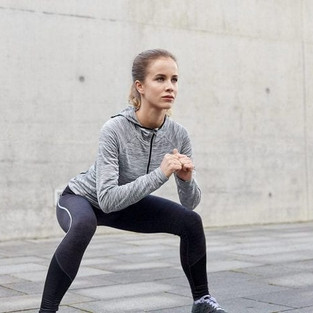Here’s how to do it right.
The cornerstone of every strength training plan is also the one you’re most likely doing incorrectly. We’re talking, of course, about the squat that bodyweight exercise revered for being both simple and deceptively hard. It’s also not easy to make sure you’re using proper squat form.
The squat is a fundamental movement pattern, you’re lowering your body’s centre of mass as close to the ground as possible, flexing the hips, knees, and ankles to the ground. Then you’re going back up, without assistance from your upper body.
For triathletes, the squat is the golden movement that will pay off for all three disciplines of the sport. Swimmers gain core strength and leg power in the water, performance on the bike increases due to leg endurance and power output, and strong legs mean better run form and economy in the final miles.
But these benefits only manifest if the squat form is correct, and though the squat looks easy enough, just drop down, there are actually a lot of ways people mess up their squat technique. These mistakes can lead to inefficient movement patterns, lack of results, and even injury.
Common Squatting Mistakes
· Bending forward at the hip.
· Not activating the core before entering the movement.
· Shifting the weight onto the toes.
· Letting knees collapse inwards (what Kepler calls “kissy knees”).
· Not squatting low enough.
· Most people don’t realise they’re making these mistakes, especially since most people were never taught how to properly squat. Again, this comes back to the simplicity of the movement because it’s so simple, people assume they don’t need instruction. But to perform a perfect squat, we need to un-learn what we think we know and go back to basics.
The Perfect Squat Form
· Start with your feet shoulder width apart, toes slightly pointing outwards.
· Stand up tall, with your shoulders back and arms by your side.
· Activate your core as you visualise keeping the hips back, like you are sitting in a chair.
· Keeping your chest tall, bend simultaneously at the hips, knees, and ankles.
· Lower down to a position where your hips are just below your knees, making sure your knees stay tracking over the toes.
· If needed, raise your arms to shoulder height to aid in balance.
· Once you get to the lowest point, press through the ground using your whole foot, keeping legs and core engaged.
· Squeeze your glutes at the top of the move before repeating.
Once you’ve mastered the basic squat, also known as the bodyweight squat, there are endless variations to making the move more challenging. Holding a dumbbell on the chest adds weight for an extra challenge, which can gradually be increased in kettlebell and barbell forms. Performing a squat on an unstable surface, such as a Bosu Ball, can help with muscle recruitment for better balance on uneven terrain.
One-legged squats, or “pistol squats,” can help identify and correct imbalances. But before levelling up your squat game, it’s most important to make sure the fundamentals are there.
For best results, triathletes should perform squats as part of their training plan two or three times per week. Start slowly when adding weight to the squat with the correct/new form, it will take a few weeks for your legs to get used to the added work.




Comments